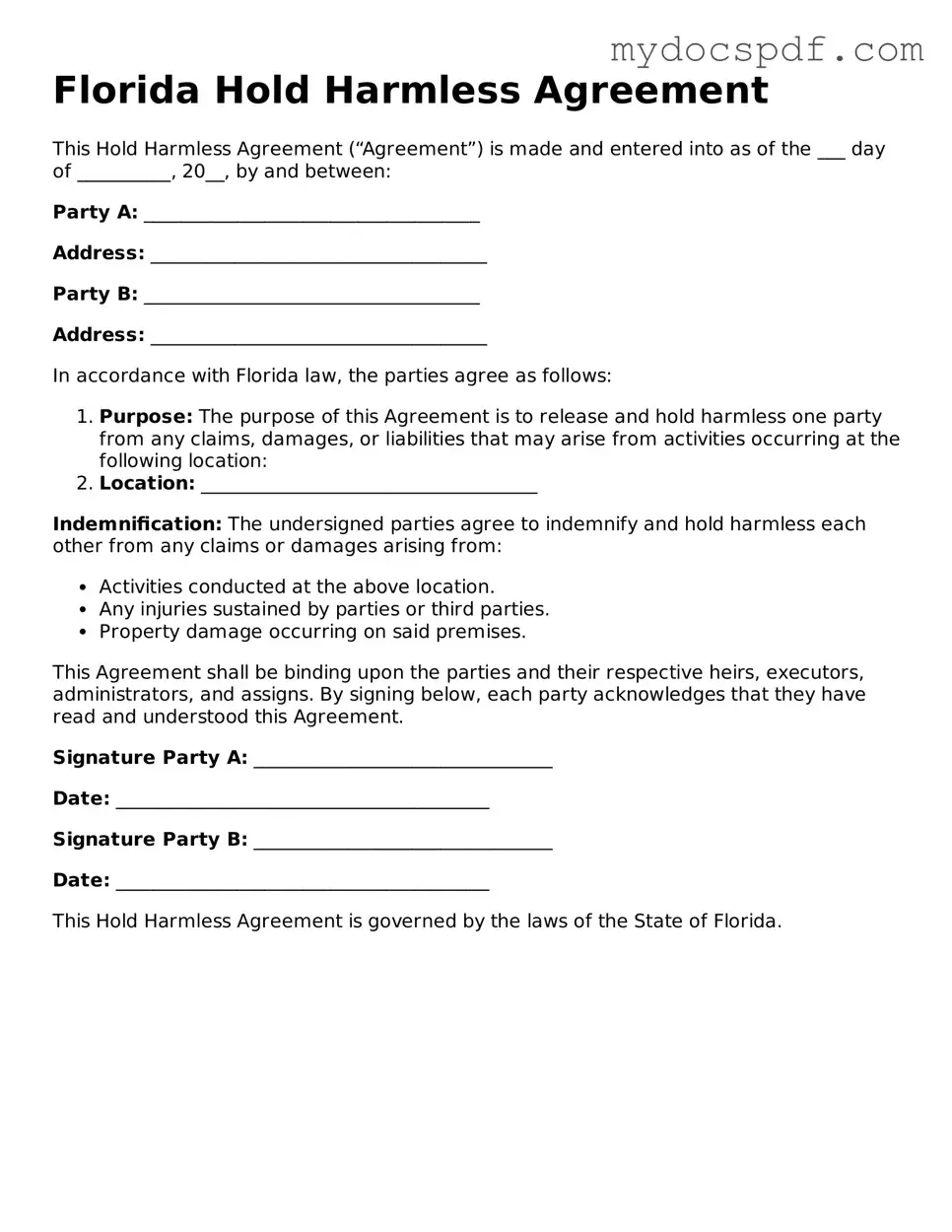Florida Hold Harmless Agreement
This Hold Harmless Agreement (“Agreement”) is made and entered into as of the ___ day of __________, 20__, by and between:
Party A: ____________________________________
Address: ____________________________________
Party B: ____________________________________
Address: ____________________________________
In accordance with Florida law, the parties agree as follows:
- Purpose: The purpose of this Agreement is to release and hold harmless one party from any claims, damages, or liabilities that may arise from activities occurring at the following location:
- Location: ____________________________________
Indemnification: The undersigned parties agree to indemnify and hold harmless each other from any claims or damages arising from:
- Activities conducted at the above location.
- Any injuries sustained by parties or third parties.
- Property damage occurring on said premises.
This Agreement shall be binding upon the parties and their respective heirs, executors, administrators, and assigns. By signing below, each party acknowledges that they have read and understood this Agreement.
Signature Party A: ________________________________
Date: ________________________________________
Signature Party B: ________________________________
Date: ________________________________________
This Hold Harmless Agreement is governed by the laws of the State of Florida.
